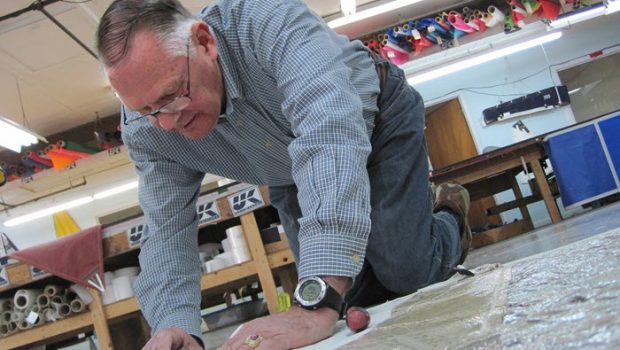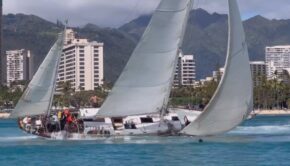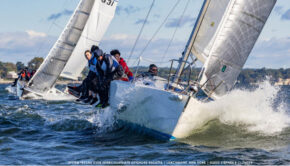75 Years of UK Sailmakers, part two
Published on December 5th, 2021
Founded in 1946 in City Island, New York by Charles “Buster” Ulmer as Charles Ulmer, Inc., UK Sailmakers is one of the world’s oldest groups of sail lofts. WindCheck magazine sat down with Charles “Butch” Ulmer (above) to discuss his father’s founding of the company that bears his name, and its evolution. Following Part 1 of the interview, here is the second half:
So, you started working full time at Charles Ulmer, Inc. in 1965…
Yes. I had worked during the summers in high school and when I returned home after leaving the Navy, I went back to work on the floor right where I had left off.
Who was the design team?
My father, and my brother-in-law Chuck Wiley. At that point, the transition from cotton to synthetics had begun. Cotton to Orlon and then Orlon to Dacron. Sail shaping in the early days of Dacron was mostly luff curve and in the case of mainsails, foot curve. There was very little broadseaming done and most of that was leech or foot tightening to keep those edges from flapping in a breeze. Sail design was largely a function of familiarity with the behavior of the material being used under load and how to keep it from stretching too far from its intended shape.
In 1958, Columbia defended the America’s Cup. Columbia was built by Nevins in City Island and she used Ratsey sails (the Ratsey loft was adjacent to Nevins). However Vim, a pre-war twelve meter almost beat Columbia in the trials. She was sailed by Bus Mosbacher and she had Hood’s sails. This was the start of Ted’s domination of the sailmaking industry which he accomplished by engineering his fabrics and perfecting the way his fabrics were woven. He still edge shaped the sails, but he’d spent a lot more time analyzing how the sails were loaded and therefore how the cloth should be woven. Early Dacron was great just because it was Dacron! The yarn was much stronger than natural fiber and much more resistant to stretch. But the weave was just a square weave (equal numbers of yarns in the warp & fill) with very little tension on the yarns.
The story was that Ted’s father was very knowledgeable about the textile industry and so Ted’s fabrics had different thread counts for mainsails and genoas and the yarns were tensioned while they were woven making the weave much “tighter”. The “Professor” as Ted’s father was known, also used 18” looms making Hood sails visibly different from the standard 36” fabric. – Full report









 We’ll keep your information safe.
We’ll keep your information safe.